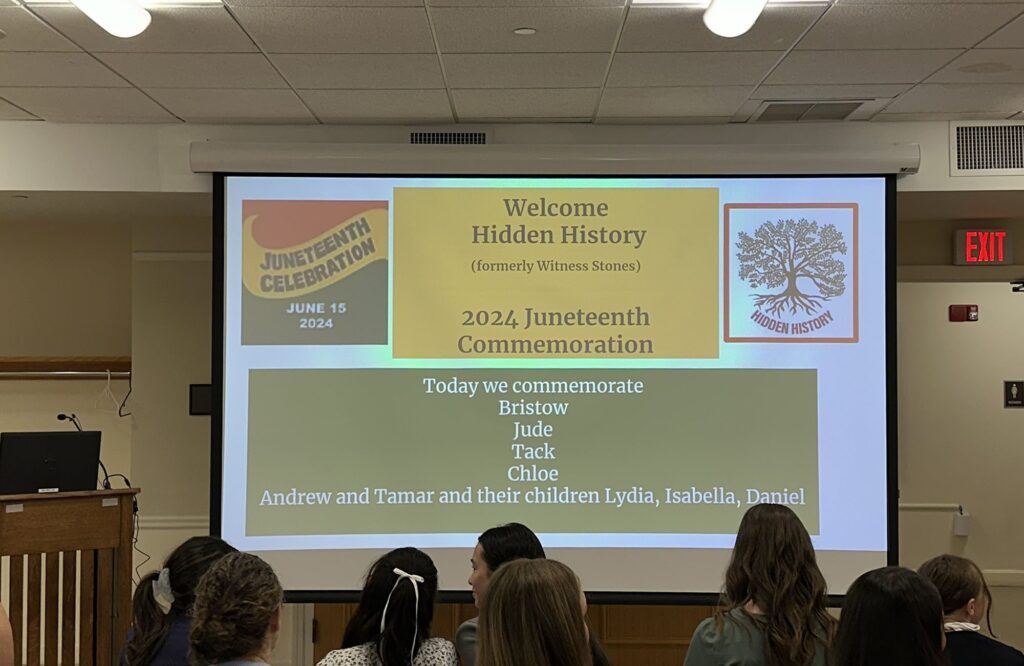After researching the slave past, students shared what they learned about slavery at a Juneteenth commemoration event hosted by Hidden History at the West Hartford Public Library’s Noah Webster branch.
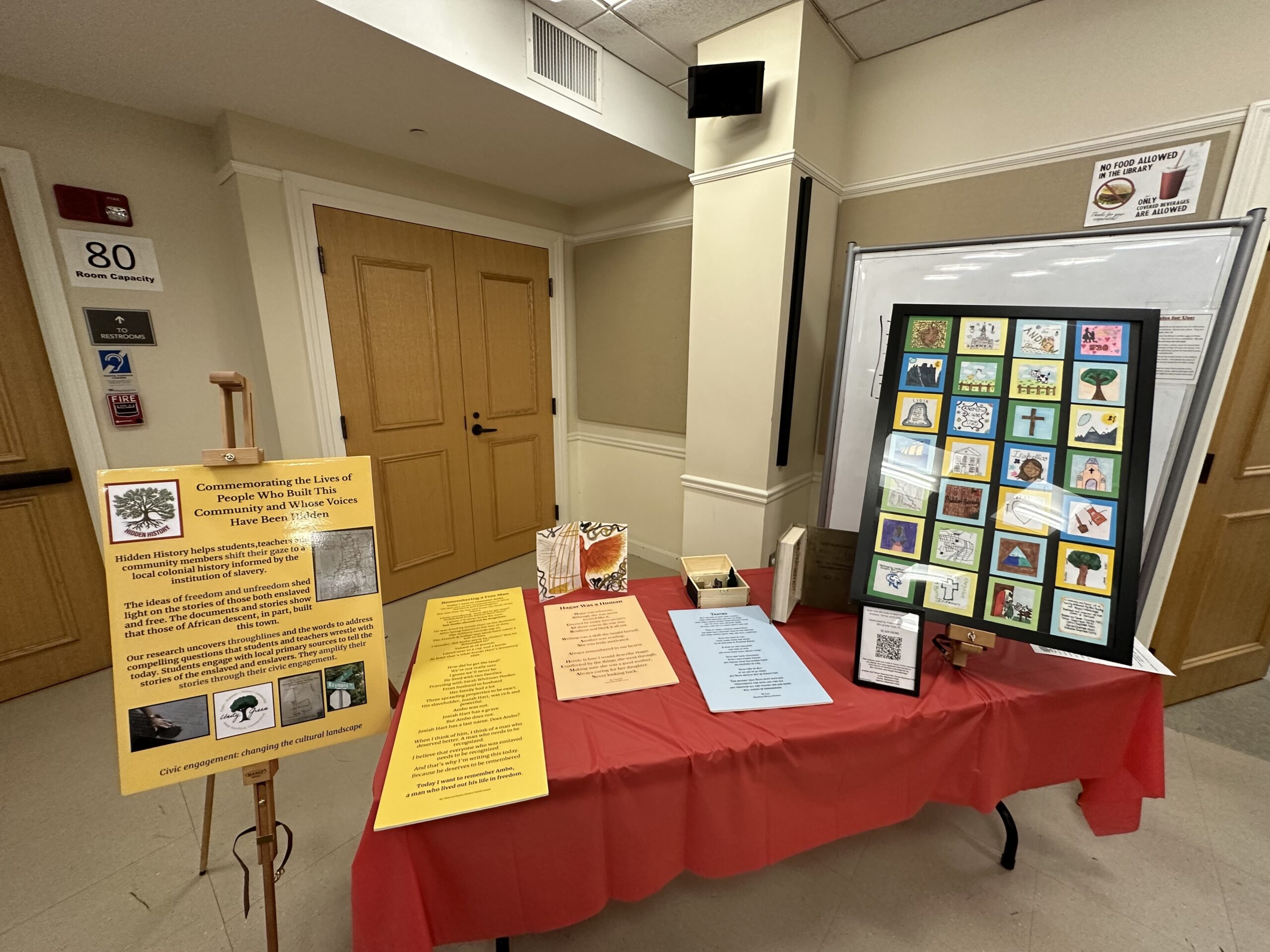
The artwork the students created was based on each of the slaves they researched. Photo by Kylie Martinez
Kylie Martinez
History is an important aspect of who we are as people, and how well we remember it will determine our future. Hidden History, a group that works with various schools in West Hartford to tell the story of slaves and “advance their stories through civic engagement activities,” held a Juneteenth commemoration ceremony on Saturday, June 15, at the Noah Webster Library.
During the event, students used primary sources to tell the stories of nine enslaved people in their own words.
Town Historian Tracy Wilson welcomed the audience and set the stage by introducing Town Council Member Carol Anderson Blanks, who was heavily involved in the program. Blanks said that continuing to uncover history, no matter how uncomfortable it may be, is important to continuing to be better citizens and better people.
“There’s so much history that needs to be uncovered, not just in our city but across our country, and when I see these young people sitting here this morning, it gives me hope that change will happen,” she said.
Following Kayla Rosinski, a 2023 Conard High School graduate who beautifully sang Black Nation, Wilson spoke more about the background of the group, Hidden History, and Wilson revealed that their logo was inspired by the largest and oldest tree in West Hartford.
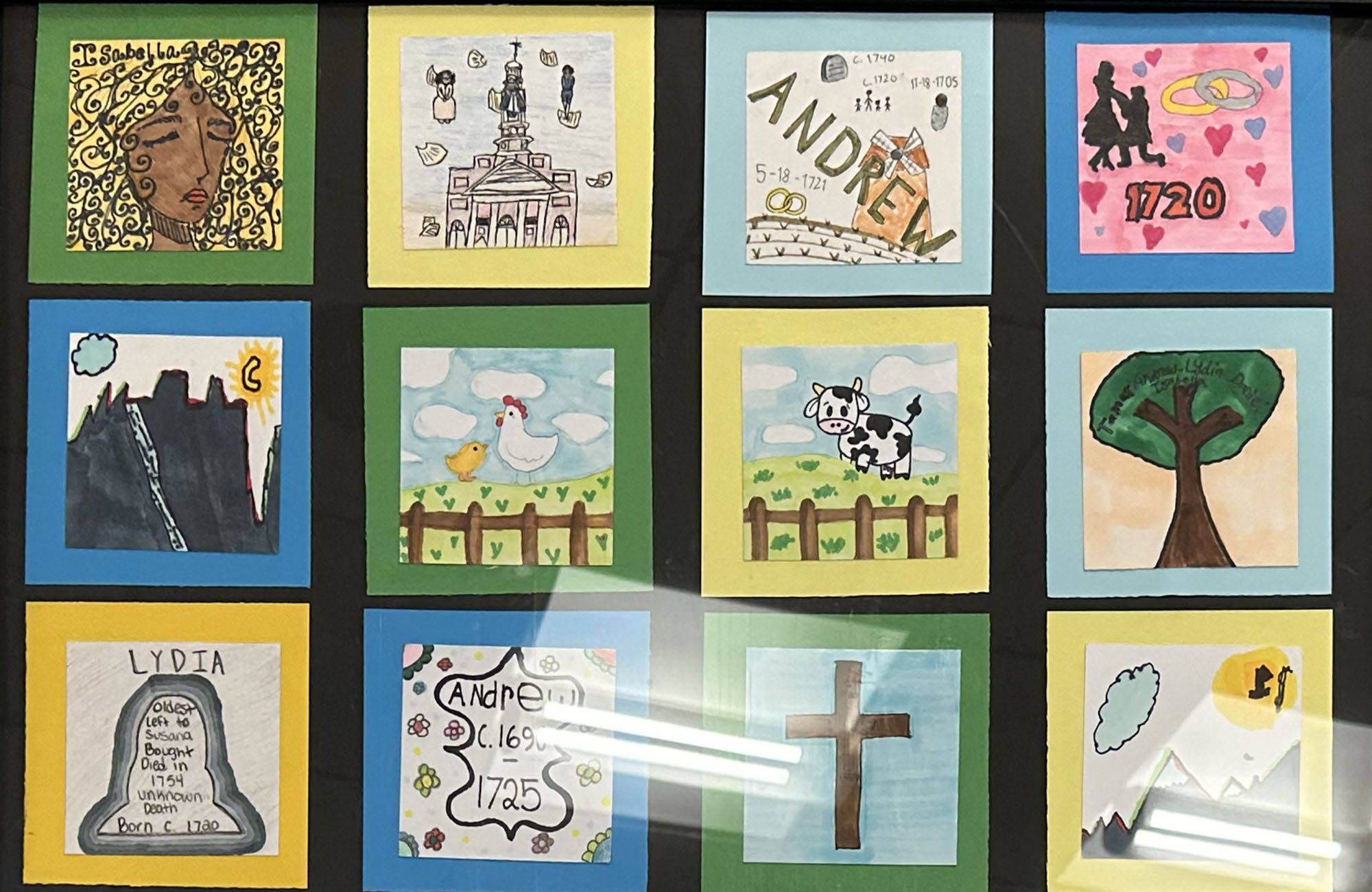
Designs created by Watkinson Middle School students for a quilt to be displayed at Centre Church. Photo by Kylie Martinez.
“The logo represents the power that is hidden within the roots of this tree, a power that we don’t normally see, and in many ways, that’s the strength of this tree,” Wilson said. “We think knowing this hidden history can help us understand where we are today.”
For greater impact, the audience was given one to three names of enslaved people. The audience went around the room reading the names and stating whether or not the enslaved people were freed. Although there is limited or no information about the 59 enslaved people, reading their names reminded people how important it is to not forget them and to continue to learn and explore their history.
Wilson then introduced the audience to Flora, who was sold in 1796 and forced to live in Stratford. During the presentation, a silhouetted portrait of Flora was displayed next to her purchase contract. In 2021, artist Corey Payne used the silhouette to paint a mural paying tribute to Flora and others, with the names of enslaved people, murdered Black transgender women, and people killed at the hands of police inscribed in her hair.
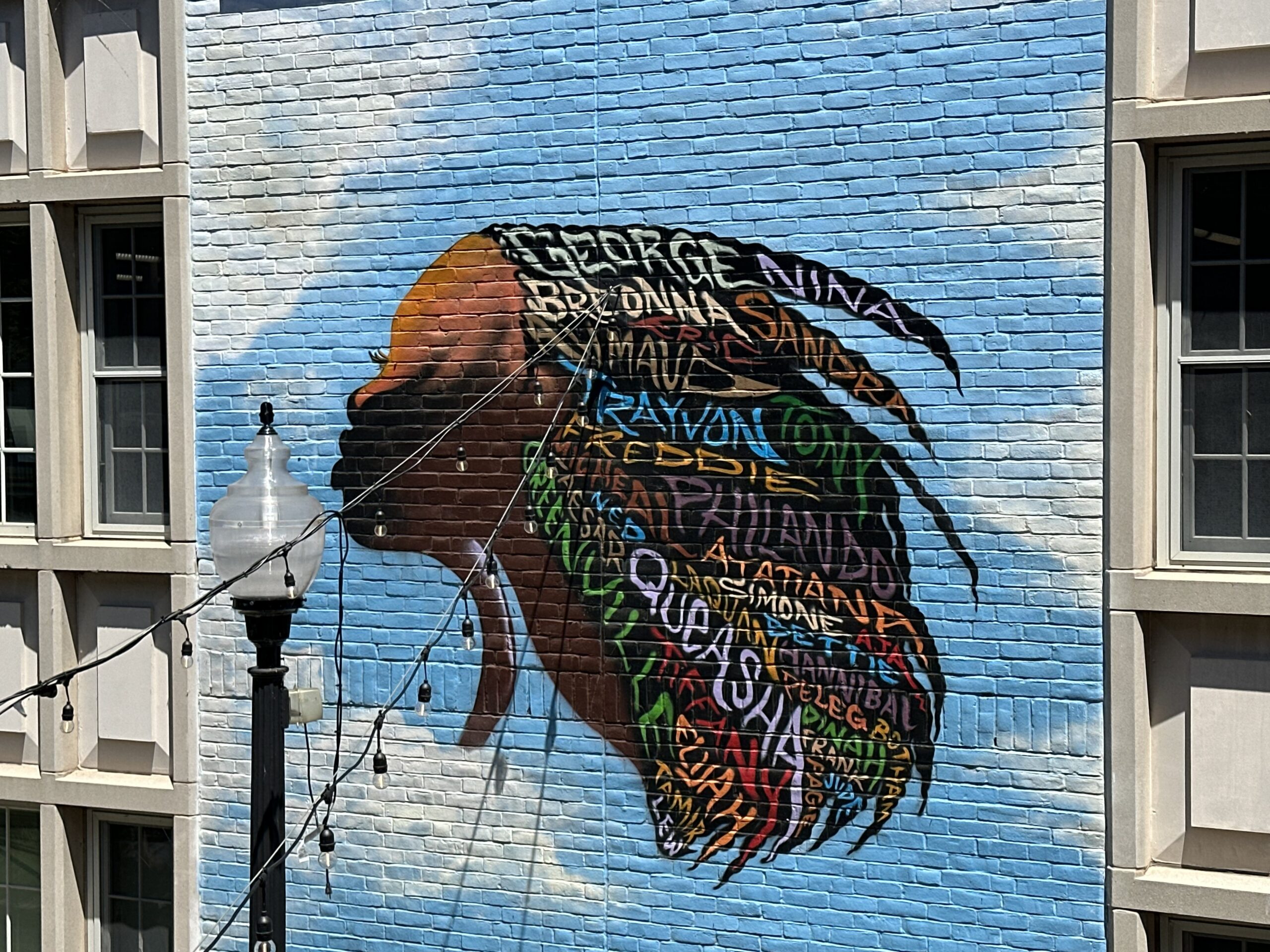
Her silhouette was the inspiration behind Corey Payne’s mural outside the Noah Webster Botanical Library. Photo by Kylie Martinez
Finding information about slaves has been difficult due to the lack of documentation on these people. Despite the challenges, students from King Philip Secondary School, Lenbrook School, Kingswood Oxford School and Watkinson School have proven that even with limited resources, it is possible to learn and discover even the tiniest bit of information about slaves and their history.
In 1775, Bristow’s certificate of emancipation gave him freedom to “go wherever he pleased, whenever he pleased,” Wilson said. Prior to this, Bristow had been captured in Africa, sold to the Hooker family, and served in the French and Indian War. Students at King Philip Middle School have promoted Bristow’s voice through various artistic mediums, including poetry, paintings and models.
Though information about “Jude the Freedom Boy” was sparse, fifth-graders read aloud their impressions of what they learned. One student said they knew Jude was smart because he ran away from home on a Saturday night and had a fake passport.
At Watkinson School, eighth-grade students were tasked with interpreting and researching Andrew and Tamar and their three children, Lydia, Isabella and Daniel. The Hartford family was enslaved by the pastor of the First Church of Christ. Watkinson Middle School Principal Jenny Esposito said as Watkinson students researched more about the family, they were left with even more questions.
As part of their final project, students created quilts that artistically represented their families and communities to be hung in the First Christian Center Church in Hartford, “which helps them commit to the past,” said Hidden History consultant Elizabeth Devine.
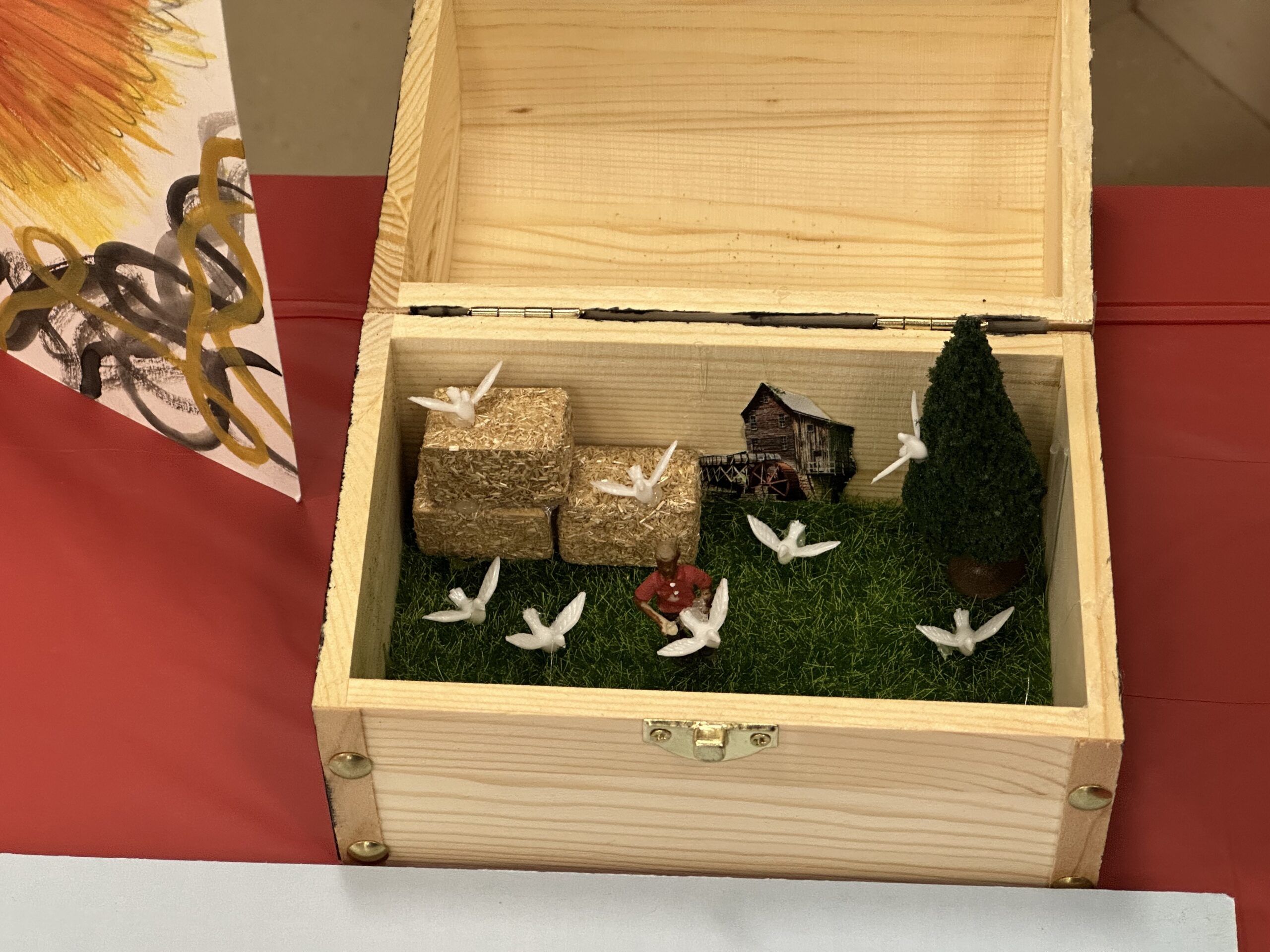
A close-up of the artwork students created in memory of Bristow and her life. Photo by Kylie Martinez.
The final two slaves mentioned were Tuck and Chloe, whose stories were told by students at Kingswood Oxford School. Unfortunately, Tuck was unable to free himself and 16 months after attempting to free himself, he was sold to Thomas Seymour’s son, Henry Seymour, in New York City at the age of 21. Chloe sought and was able to obtain her freedom in 1784.
At Kingswood Oxford, students researched the slave past and built a memorial to commemorate them. They used podcasts, visual presentations and more to demonstrate their learning.
As the Juneteenth commemoration drew to a close, one of the final speakers was West Hartford School Board Chair Lorna Thomas-Farquharson. Thomas-Farquharson took to the podium and showed the audience an item before placing it in a jar. At the end of her speech, she asked three volunteers to say what they thought was in the jar.
After the volunteer mentioned the elephant, Thomas-Farquharson said, “Elephants are known to have good memories. So if I put an elephant in that container and you couldn’t see the elephant, you would remember it, right? This is symbolic of what you are learning here…You don’t need to have the elephant in front of you to remember, but it’s important that you always remember.”
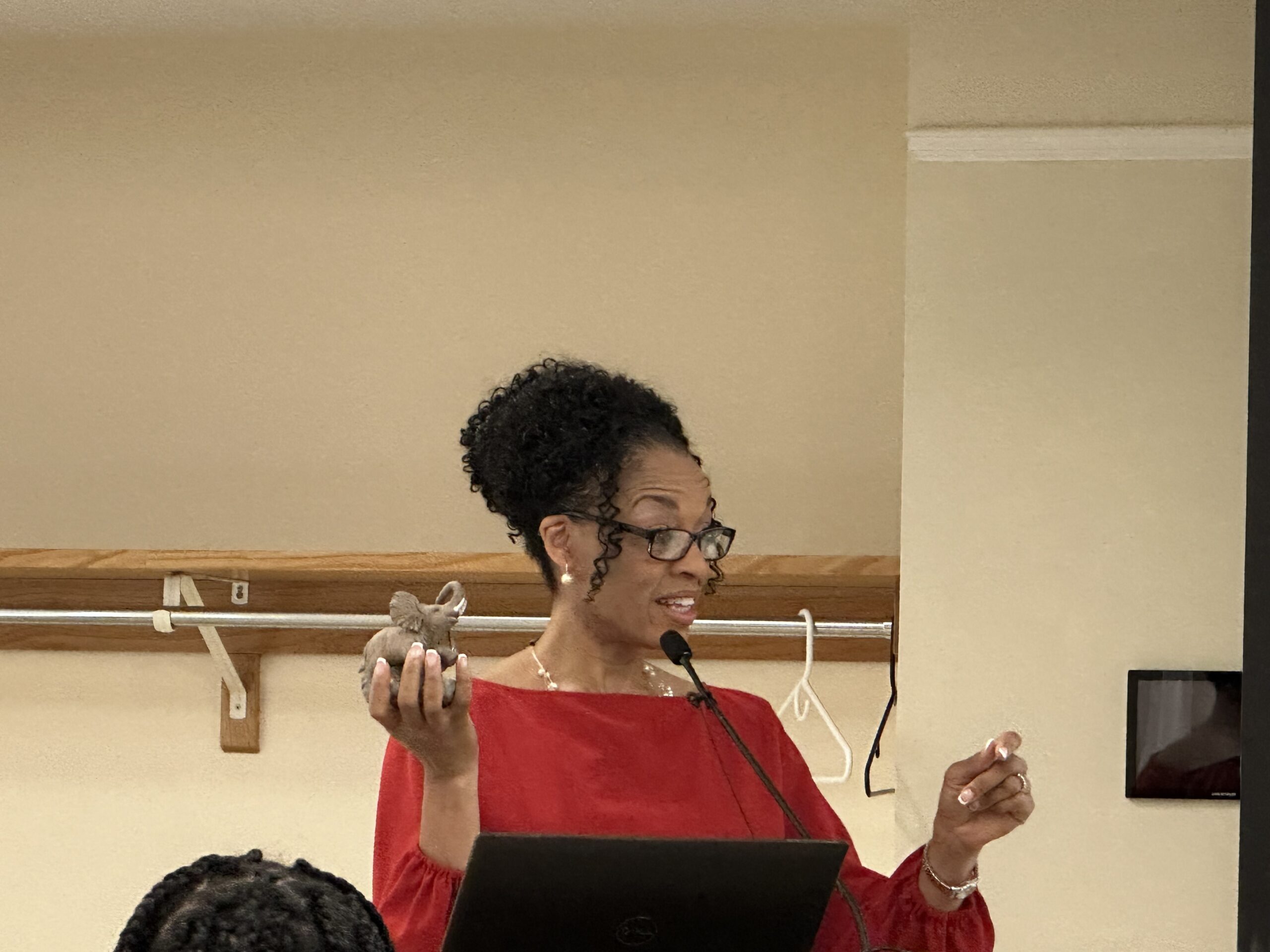
Lorna Thomas-Farquharson holds an elephant in a container, symbolizing that the audience will not forget what they have learned and the history they have learned. Photo by Kylie Martinez
“We need you so much and we are counting on you to help us move forward into the future as you are our leaders,” Thomas-Farquharson said. “The fact that you have had the courage and perseverance to dig up events from the past and speak about them now with empathy, consideration and respect speaks volumes.”
Although Juneteenth marked the clearing of the names of slaves, the day also saw celebrations, with dancers and musicians performing in the Town Hall parking lot, multiple vendors selling merchandise, and food trucks selling a variety of foods.
During their performance of Friendz World Music, the group urged the audience to remember their ancestors out loud on this day, saying that we are living through history and so we need to remember not only our ancestors but also those around us.
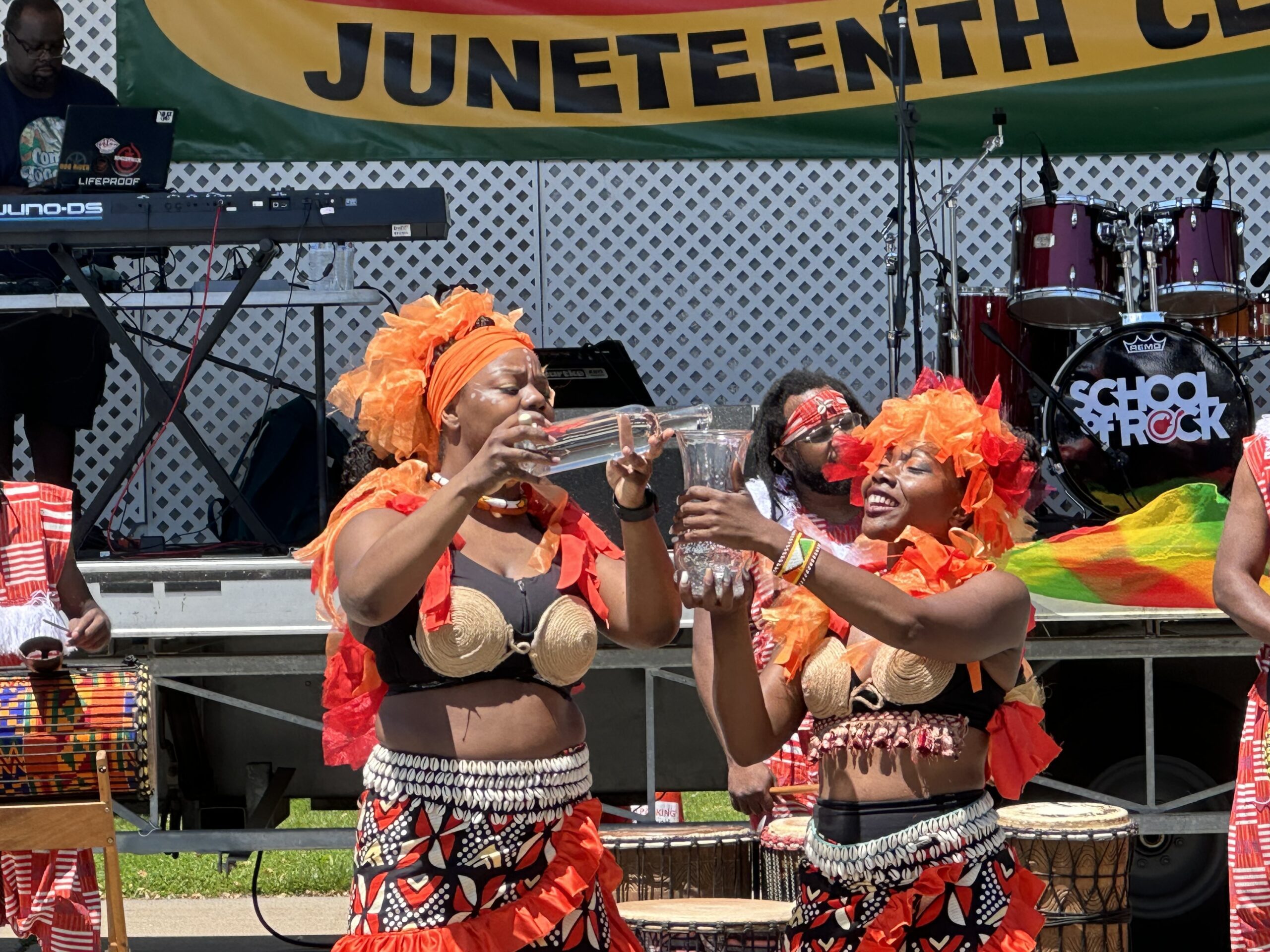
Friends World Music poured water into glass containers to symbolize the celebration of life. Photo by Kylie Martinez
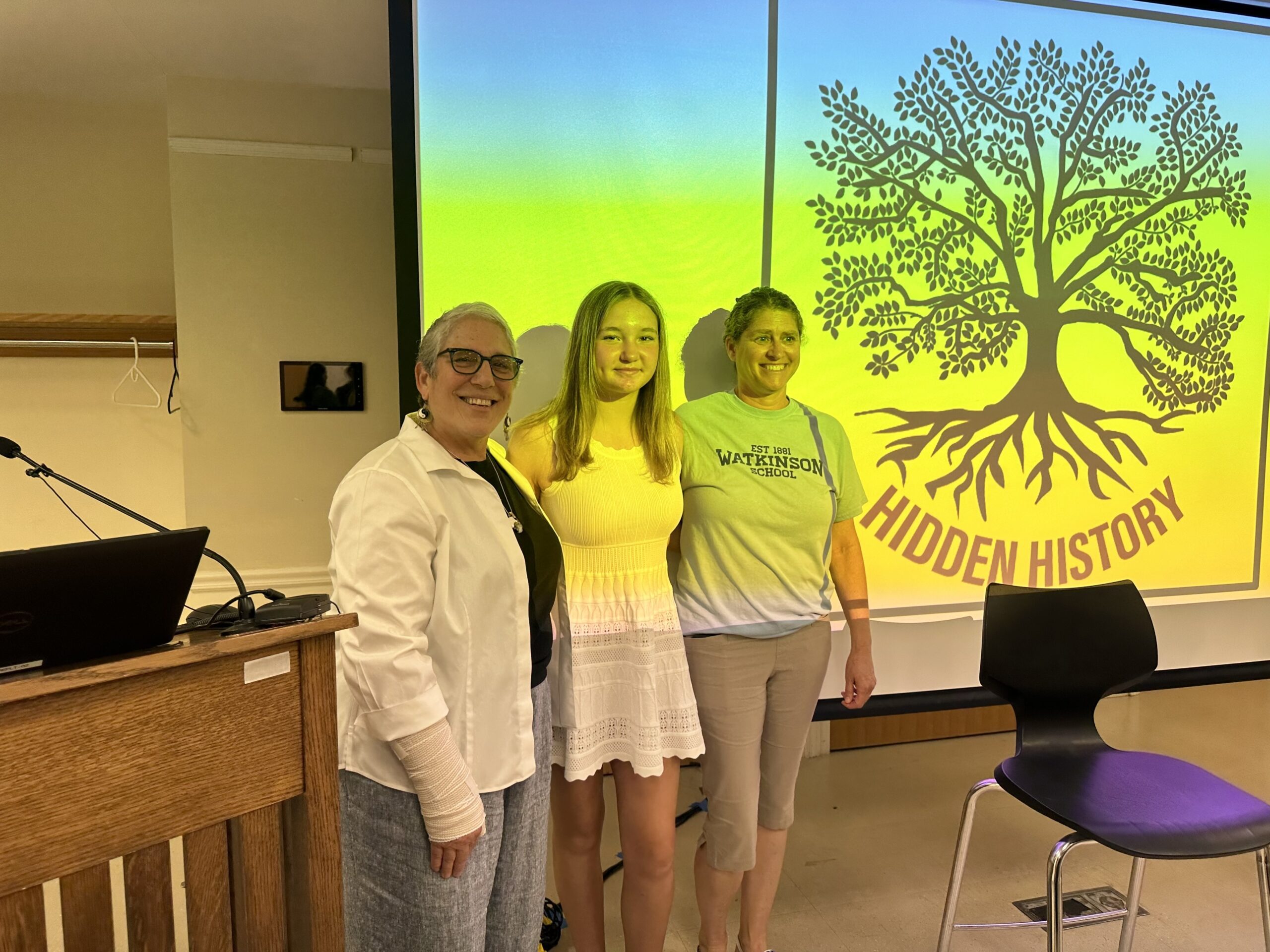
Elizabeth Devine, Harper Jensen, Jenny Esposito. Photo by Kylie Martinez
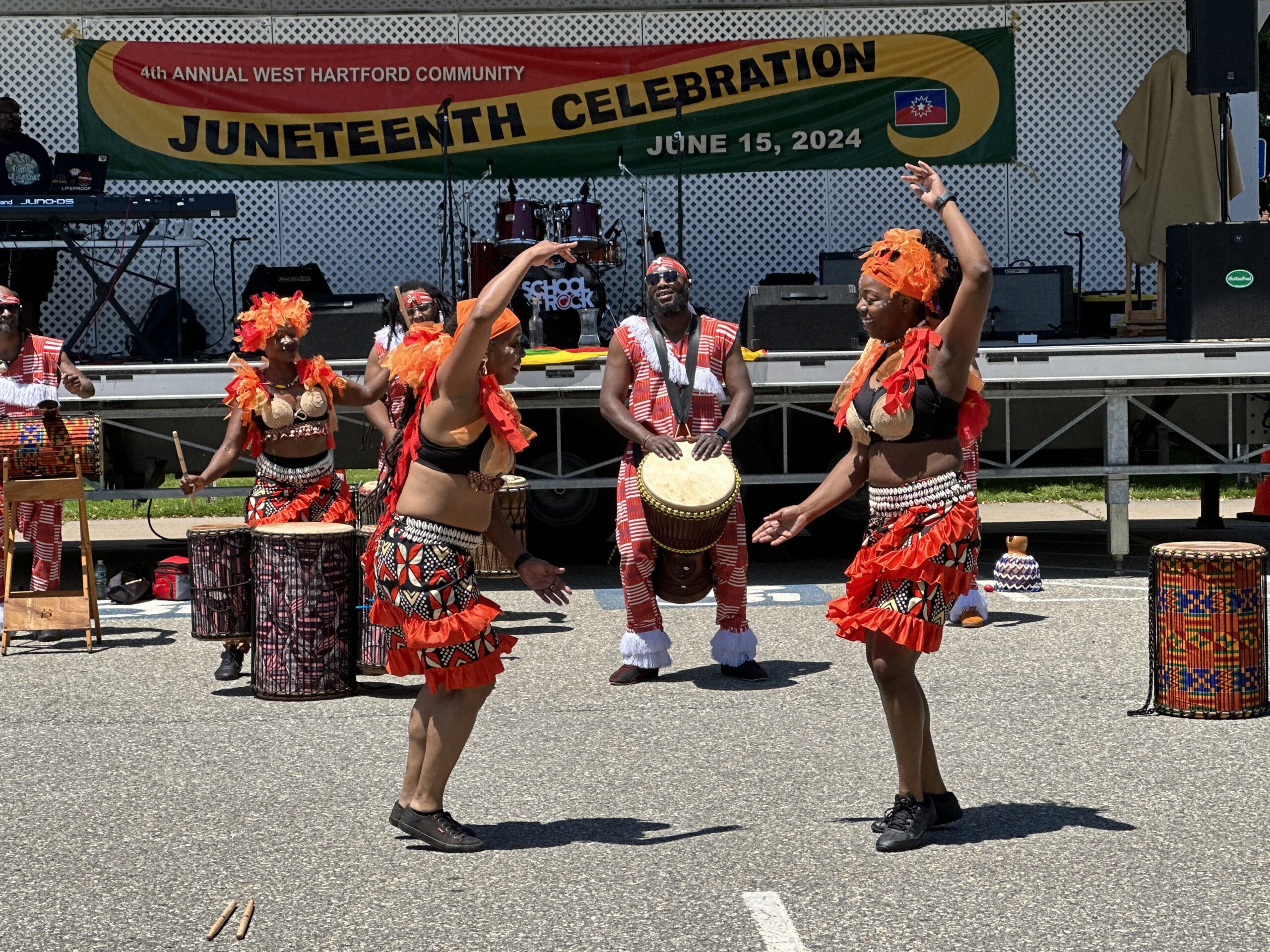
Friends of World Music dancing at West Hartford’s Juneteenth Celebration. Photo by Kylie Martinez.
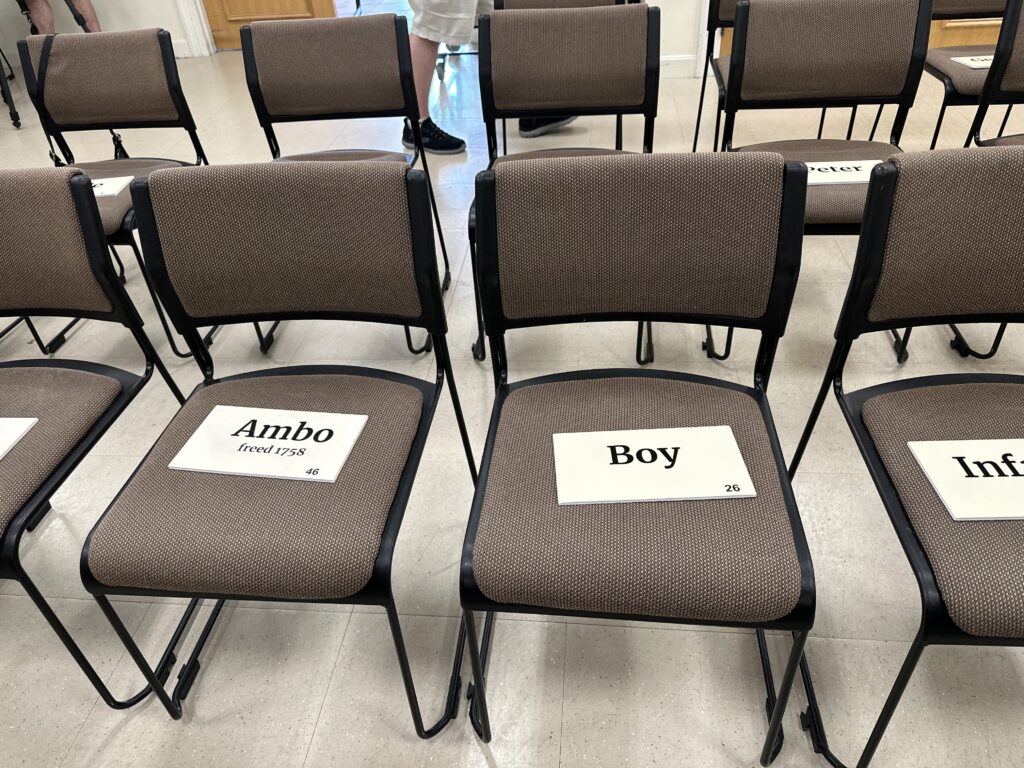
The names of enslaved people were read out. Photo by Kylie Martinez
Like what you see? Click here to subscribe to the We-Ha newsletter and stay on top of what’s going on in West Hartford. Click the blue button below to become a supporter of We-Ha.com and help us in our efforts to continue providing quality journalism.


